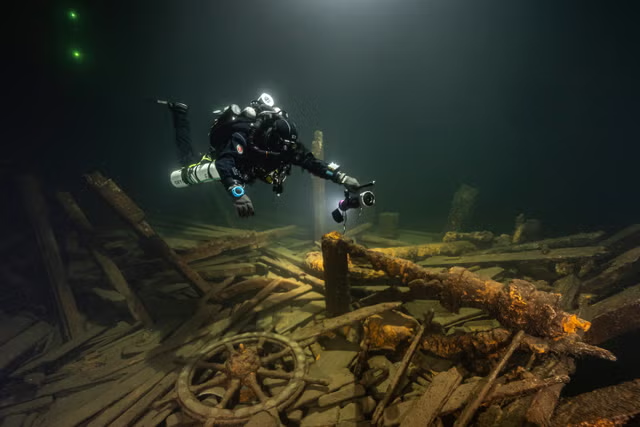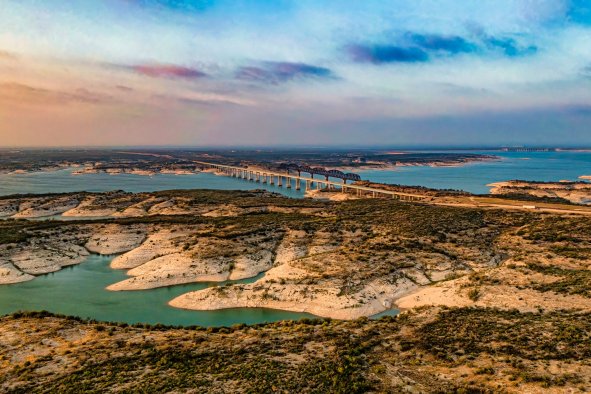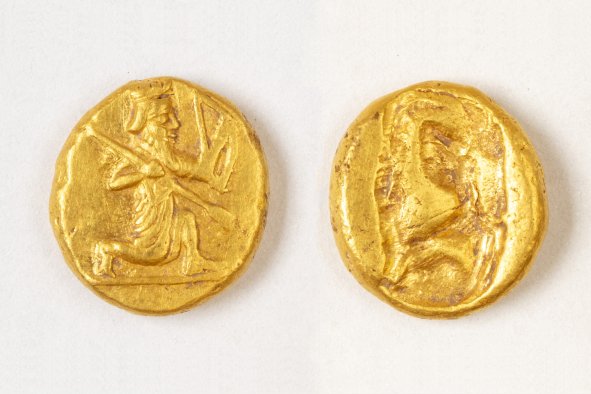An archaeologist has discovered an "extraordinary" ancient Roman fort that once housed hundreds of soldiers.
Researcher Mark Merrony located the remains of the fort in Pembrokeshire, a county in southwest Wales. The Roman Empire conquered most of Britain, including Wales, in the first century. The conquered territory, inhabited by Celtic peoples, became the Roman province of Britannia, which lasted until the end of the occupation in the fifth century.
During the conquest, the Romans constructed military installations across Britain. But before the latest discovery, only one other Roman fort had been documented in Pembrokeshire—an area that has been somewhat neglected by archaeologists—making the new one a rare find.
"This is an extraordinary discovery of a Roman fort with well-preserved fortifications in a region of Wales where the general perception is that there is a lack of Roman influence," Merrony told Newsweek.
"[The discovery] indicates that west Wales was fully integrated into Roman Britain and also casts fresh light on Roman relations with the indigenous Celtic Demetae tribe, about whom little is known from written and archaeological sources. It was previously thought that they coexisted peacefully, but the presence of a second fort in the area indicates a strong military presence and an iron fist Roman imperial policy."
Merrony, who is editor-in-chief of a quarterly archaeology and history magazine, Antiqvvs, in which the latest research was published, found the fort after identifying a previously unknown Roman road.
The site has all the hallmarks of a classic Roman fort, taking the form of a "playing card" with rounded corners, banks and ditches.
"The fort has a massive ditch, which seems to be a double or a triple ditch in places, and the fortifications are constructed of huge stones in places as well as earth, which is typical," Merrony said.
The archaeologists also identified a large number of characteristic Roman roofing slates, which are seen elsewhere.
While the buildings of the fort remain buried—the site has yet to be excavated—the available pieces of evidence were sufficient to confirm its identity as a Roman fort.
The fort measures roughly 607 by 509 feet and probably housed a cohort of around 500 "auxiliaries"—soldiers primarily recruited from the masses of free provincial subjects who did not hold Roman citizenship. This is roughly in line with the size of other auxiliary forts in Roman Britain.
By the middle of the second century in Britain, auxiliary troops significantly outnumbered legionaries—soldiers who were Roman citizens. Auxiliary regiments were attached to citizen legions. The auxiliaries at the Pembrokeshire fort were a detachment of the Second Augustan Legion based in Caerleon in the north of Wales, Merrony said.
The Pembrokeshire fort has yet to be dated, but it probably coincides with the age of many auxiliary forts in Britain, which were founded in the Flavian period (A.D. 69-96) and abandoned in the third century.
"It is preserved in the landscape by a remarkable stroke of luck and has been left largely untouched by farming," Merrony wrote on a GoFundMe page seeking to raise money for further research at the site.
Many questions remain unanswered, such as the date of the fort's foundation and abandonment, according to Merrony.
"Is it associated with a civilian settlement, vicus? Did it become a civil settlement? Is it associated with a bathhouse? Also, it is located near what appears to be another, smaller fort, a fortlet, which needs to be identified conclusively," he said.
"The site, and its possible associated sites, require geophysical and topographical surveys and trial excavation," Merrony said.
Do you have a tip on a science story that Newsweek should be covering? Do you have a question about archaeology? Let us know via science@newsweek.com.
Disclaimer: The copyright of this article belongs to the original author. Reposting this article is solely for the purpose of information dissemination and does not constitute any investment advice. If there is any infringement, please contact us immediately. We will make corrections or deletions as necessary. Thank you.



